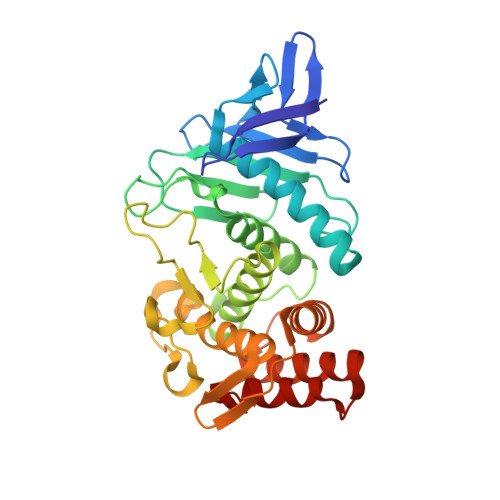Structure of Gentlyase, the Neutral Metalloprotease of Paenibacillus Polymyxa
Ruf, A., Stihle, M., Benz, J., Schmidt, M., Sobek, H.(2013) Acta Crystallogr D Biol Crystallogr 69: 24
- PubMed: 23275160
- DOI: https://doi.org/10.1107/S0907444912041169
- Primary Citation of Related Structures:
4B52, 4GER - PubMed Abstract:
Gentlyase is a bacterial extracellular metalloprotease that is widely applied in cell culture and for tissue dissociation and that belongs to the family of thermolysin-like proteases. The structure of thermolysin has been known since 1972 and that of Bacillus cereus neutral protease since 1992. However, the structure determination of other Bacillus neutral proteases has been hindered by their tendency to cannibalistic autolysis. High calcium conditions that allow the concentration and crystallization of the active Gentlyase metalloprotease without autoproteolysis were identified using thermal fluorescent shift assays. X-ray structures of the protease were solved in the absence and in the presence of the inhibitor phosphoramidon at 1.59 and 1.76 Å resolution, respectively. No domain movement was observed upon inhibitor binding, although such movement is thought to be a general feature of the thermolysin-like protease family. Further analysis of the structure shows that the observed calcium dependency of Gentlyase stability may arise from a partly degenerated calcium site Ca1-2 and a deletion near site Ca3.
- pRED Pharma Research and Early Development, Small Molecule Research, Discovery Technologies, F. Hoffmann-La Roche Ltd, Basel, Switzerland. armin.ruf@roche.com
Organizational Affiliation:




















